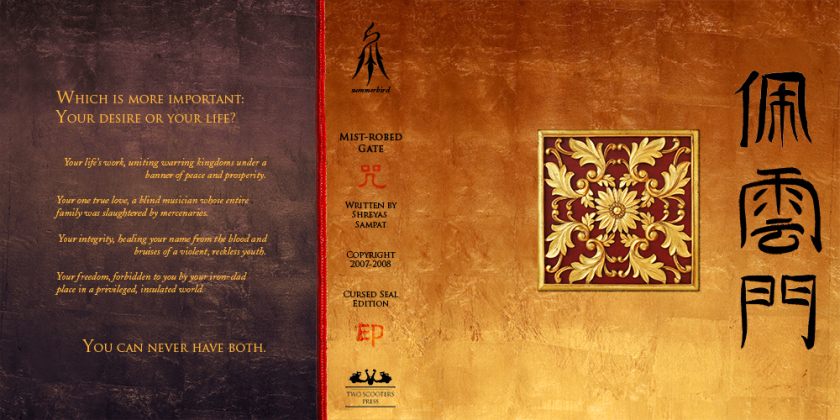I started to feel that I didn’t know roleplaying games well enough so I came up with the plan to read a roleplaying game corebook for every year they have been published. Selection criteria is whatever I find interesting.

In a sense, Mist-Robed Gate is a very simple, efficiently communicated game. It has a system that’s designed to produce wuxia-style gameplay with a premium on improvisation supported by a light evocative system. However, there are nuances that elevate it into a masterpiece.
What really strikes me in the way the published game is put together is that it approaches a roleplaying game as a comprehensive physical event. It reminds me of Bjarke Pedersen and Johanna Koljonen’s Nordic larp mantra “everything is a designable surface”. Instead of limiting itself to game mechanics or worldbuilding, Mist-Robed Gate bursts out to consider refreshments as part of its aesthetic experience.
Even the game mechanics carry the frisson of the real. The most striking is the knife ritual, requiring the use of an actual real knife. As the game progresses, you reveal and unsheath the knife. Finally, you use it to stab another player’s character sheet. This is the final escalation, moving things to wirework.
This is the game’s second signature system, a conflict sequence where the players narrate what happens and the audience (composed of the players not in the scene) judges who wins. Here again there’s an interesting touch: Instead of attempting to force their behavior with game mechanics, the game features simple guidelines for how to be in the audience. It’s social design instead of system design.
As a book, Mist-Robed Gate is 50 pages, much of which is dedicated to cooking recipes and movies that can be used as inspiration. After all, for the players to play wuxia they have to have shared reference points.
The recipes are interesting because they point to the idea of the game as a total sensory and imaginative experience, an approach that naturally makes sense to me as a larp designer.
Personally, I often struggle to grasp the purpose and vision of a game from just reading the game mechanics. For someone like me, all those recipes serve the purpose of guiding me into the mental space of the game, breathing life to the common creative goal it presents.